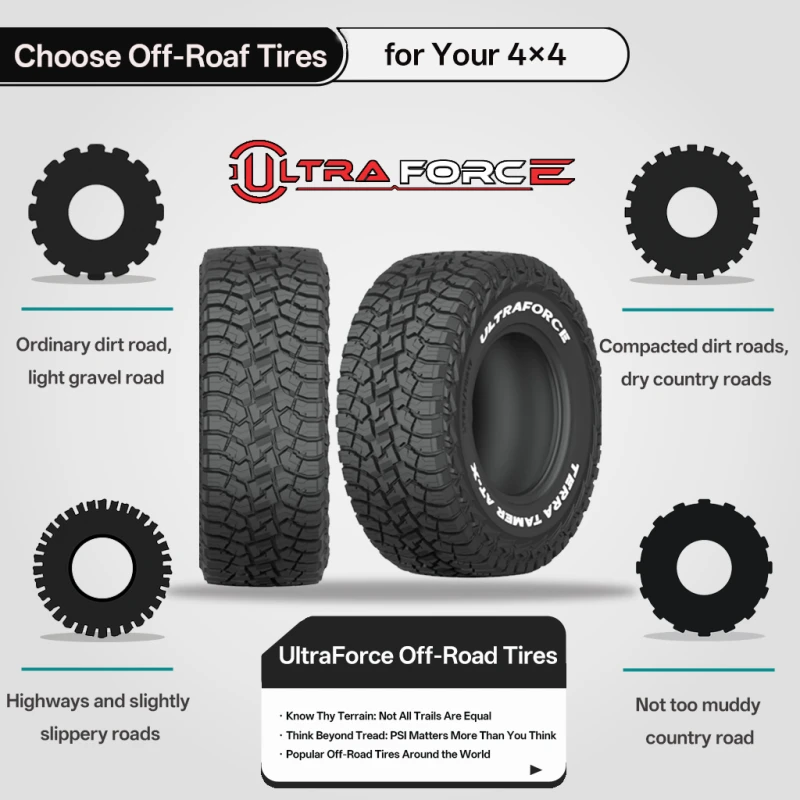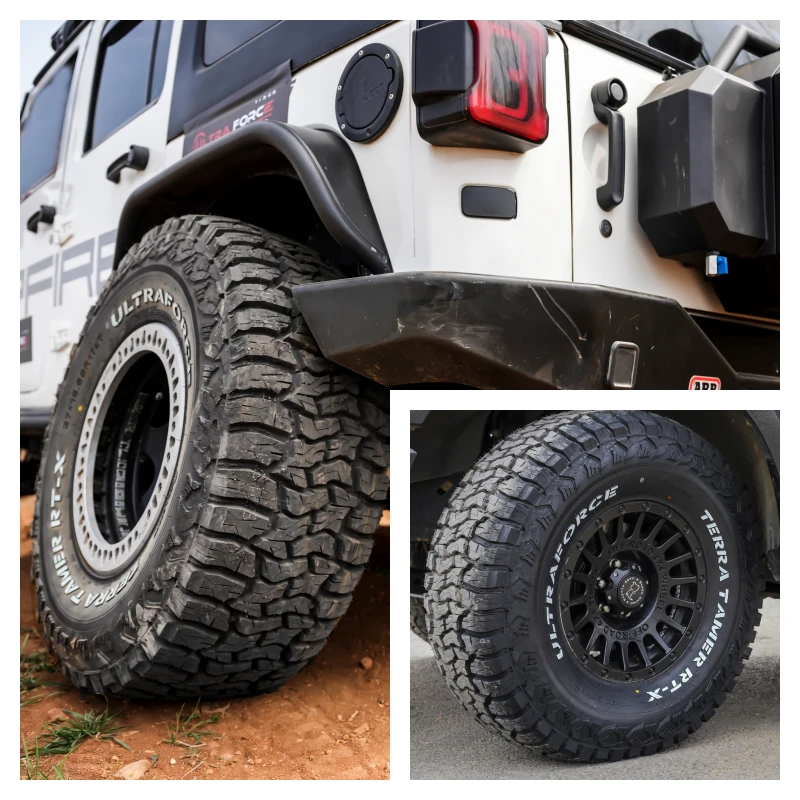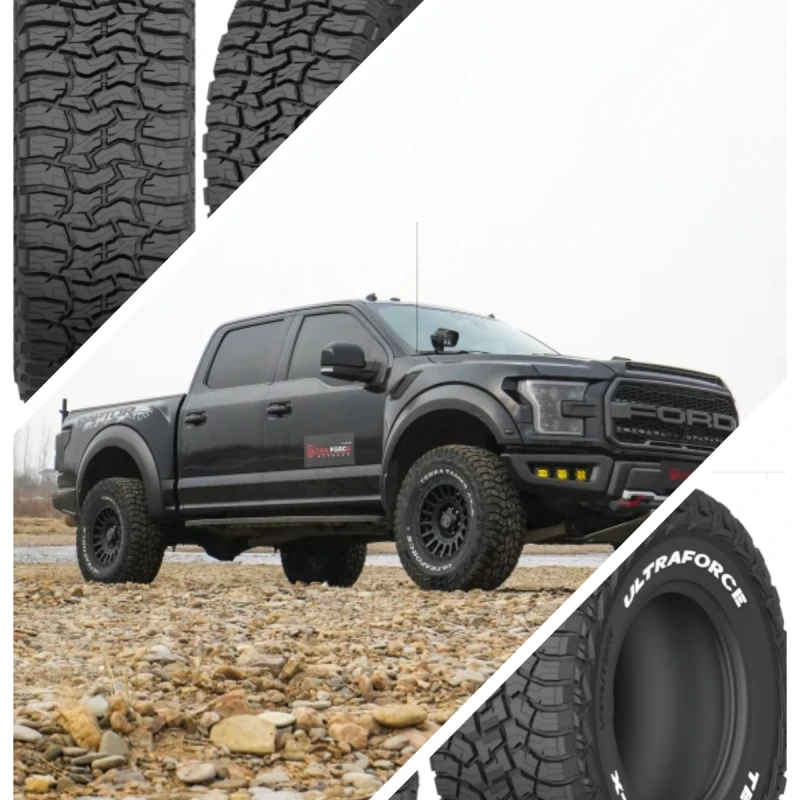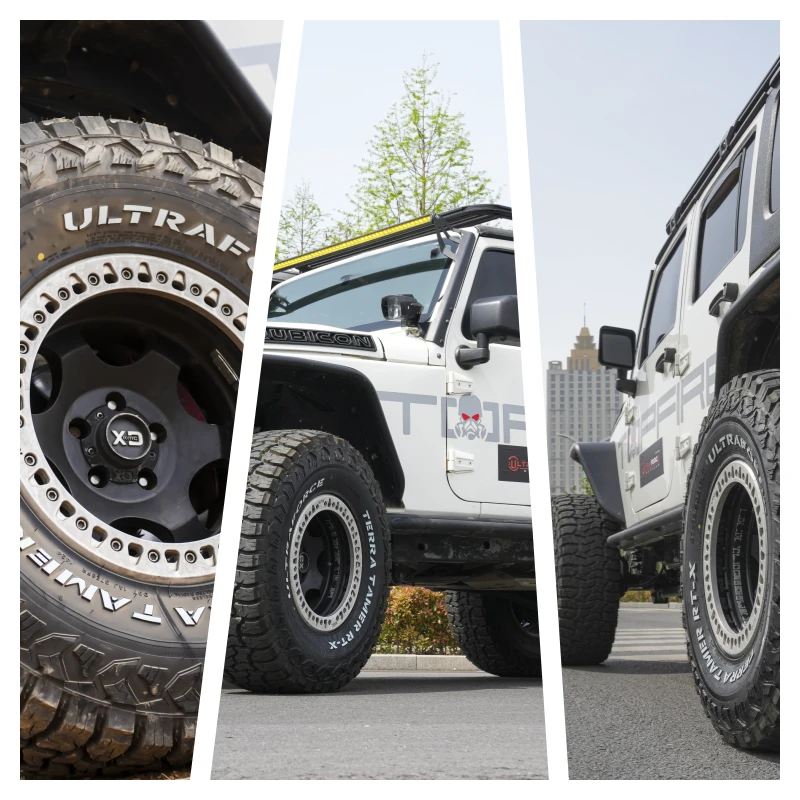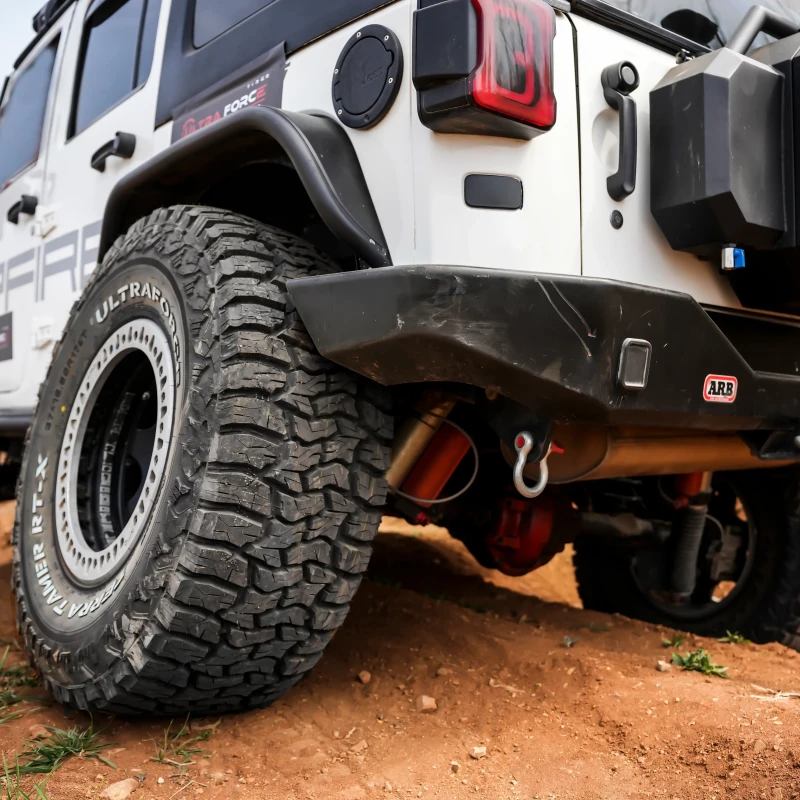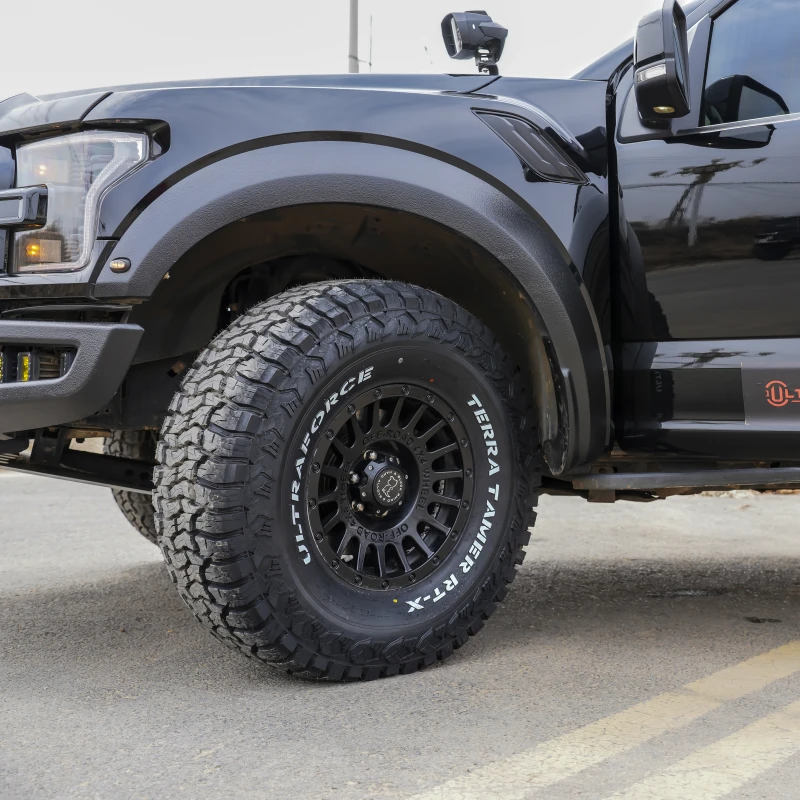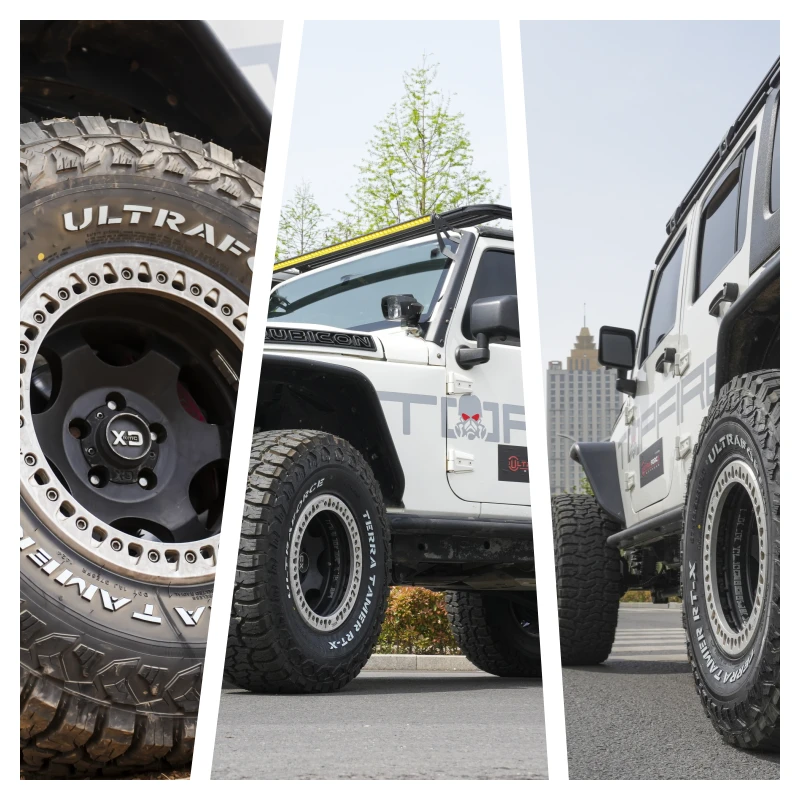A Practical Guide Backed by Data
Whether you're chasing adrenaline over rocky terrain or navigating unpredictable backcountry trails, choosing the right off-road tires for your 4x4 isn't just about aesthetics or a rugged profile — it's about survival, stability, and unleashing your vehicle's fullest potential. The tire is your only contact with the earth. And in off-roading, earth fights back.
In this comprehensive guide, we’ll cut through the confusion and dive into the science, style, and subtle art of selecting the best off-road tires. We’ll talk terrain, traction, tread design, and why thousands of seasoned off-roaders globally choose UltraForce Tires — a brand not only built on decades of technical mastery but engineered around U, the everyday adventurer.
Know Thy Terrain: Not All Trails Are Equal
Let’s start with a deceptively simple question: where are you going?
Different terrains demand different tire personalities. Here's how off-road tire types compare:
Table 1: Off-Road Tire Comparison by Use Case and Performance
| Tire Type | Best Use | Traction | Durability | Noise Level | Fuel Efficiency |
|---|---|---|---|---|---|
| All-Terrain (A/T) | Mixed surfaces | Moderate | High | Low | Good |
| Mud-Terrain (M/T) | Mud, loose soil | High | Moderate | High | Low |
| Rock-Terrain (R/T) | Rocky trails | Very High | Very High | Moderate | Moderate |
| Sand Tires | Sand dunes | High | Low | Low | Moderate |
| Snow Tires | Snow, ice | Very High | Moderate | Low | Good |
You see, each tire has a personality — some bold and aggressive, others subtle yet tactical. Choosing one should mirror your environment and driving intent. A tire that’s phenomenal in the dunes may whimper on the rocks.
Think Beyond Tread: PSI Matters More Than You Think
You can slap on the best tire money can buy, but if your tire pressure isn’t dialed in for the terrain, you're either wasting rubber or risking rollover. Lower pressures give a broader footprint, crucial for grip in soft terrains like sand or mud. Too high, and you're bouncing off rocks like a pinball.
Table 2: Recommended PSI by Terrain
| Terrain | Recommended PSI |
|---|---|
| Highway | 35 |
| Gravel | 28 |
| Sand | 18 |
| Mud | 22 |
| Rocks | 20 |
UltraForce Tires not only engineers treads for every terrain but designs internal structures that hold form even under aired-down conditions — a balance between flexibility and strength that few in the industry have mastered.
Popular Off-Road Tires Around the World: What the Data Says
Market preference isn’t always about performance — sometimes it’s about habit, climate, and regional terrain dominance. Here’s a quick snapshot of how off-road tire preferences break down globally, and where UltraForce shines:
Table 3: Global Off-Road Tire Preferences vs. UltraForce Market Share
| Region | Top Off-Road Tire Preference | UltraForce Sales Share (%) |
|---|---|---|
| North America | All-Terrain | 32 |
| Europe | Mud-Terrain | 25 |
| Australia | All-Terrain | 18 |
| Middle East | Sand Tires | 12 |
| Asia | Mixed | 13 |
It’s no coincidence — our global research team works directly with terrain analysts and off-road clubs to develop location-specific solutions. Whether it’s Arctic chill or Saharan heat, UltraForce customizes tread compounds and sidewall fortifications to meet demand.
Signs You’re Using the Wrong Tire (And Why It Hurts)
There’s no gentle way to say this: the wrong tire punishes. It wears faster. It growls on pavement. It sucks down fuel. It spins when it should grip. Here are signs you’ve chosen poorly:
Unusual wear patterns (center wear = overinflated; shoulder wear = underinflated)
Frequent spinning/slipping on your usual trail
Overheating after long off-road use
Sidewall cracking or chunking
When you ride with UltraForce Tires, you get peace of mind from decades of compound testing, terrain simulations, and R&D refinement — plus, we offer custom sidewall and tread options based on your routes, not just generic use cases.
It’s Not Just What You Buy — It’s How You Maintain It
Even the best off-road tires need TLC. Rotate every 6,000–8,000 miles. Rebalance often. And check pressure before and after every trip. Keep an eye on your tread depth — for mud tires, once it gets below 13mm, performance degrades rapidly.
With UltraForce Tires, you’re never flying blind. Our customer service team provides after-sale monitoring guides and usage calculators to help prolong tire life and improve performance predictability.
The Custom Advantage: One Size Doesn’t Fit All
Here’s the truth: mass-market tires often cut corners. One mold. One rubber formula. One compromise-fueled product.
At UltraForce, we don’t just sell tires — we engineer solutions. Need extra siping for snow grip? Done. Want aggressive shoulder lugs for muddy jungle trails? We can make it happen. Custom sizes, branding, tread depths, and compound hardness — all tuned to your mission.
This is where we break from the pack. We believe your tire should be as custom as your build.
Stories from the Trail: Real Off-Roaders on UltraForce
“We run UltraForce mud tires on our Baja rigs. Tough as hell, yet they clean out fast and grab where others dig in and die.”
— Derek M., Utah-based overlander
“After switching to UltraForce’s R/T custom set, I’ve seen better wear over granite and sandstone. No blowouts. Quiet on-road. Hook like claws off-road.”
— Linda G., Off-Road Club Leader, Australia
It’s these stories that fuel us — not just the data, but the dirty boots and busted knuckles of people pushing our tires to the limit.
Final Thoughts: The Tire Is Your Compass
Choosing off-road tires is part science, part philosophy. It’s about knowing yourself as a driver, knowing your terrain, and trusting that your tires won’t blink when the trail disappears. UltraForce Tires is committed to making that promise — not with flashy gimmicks, but with engineering, data, and a global community of adventurers who demand the best.
So when you're ready to take your 4x4 to the next level — when ordinary traction just won't do — remember: U come first at UltraForce. Contact us now!
